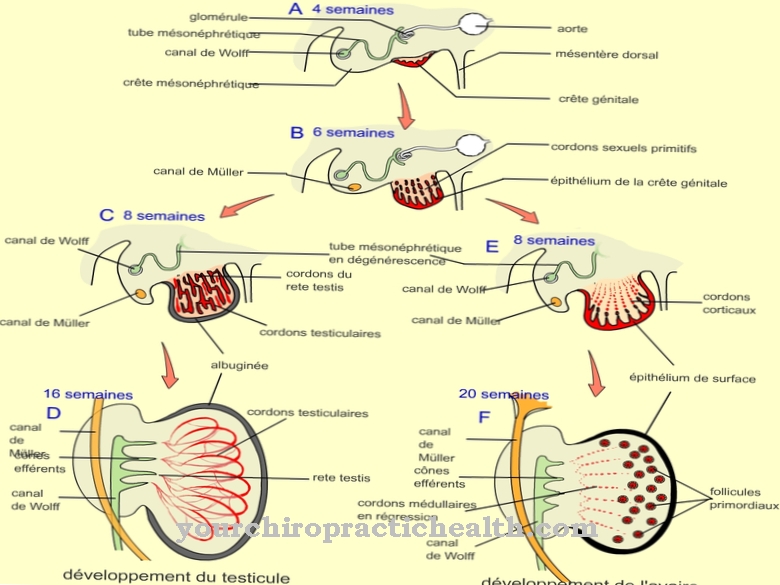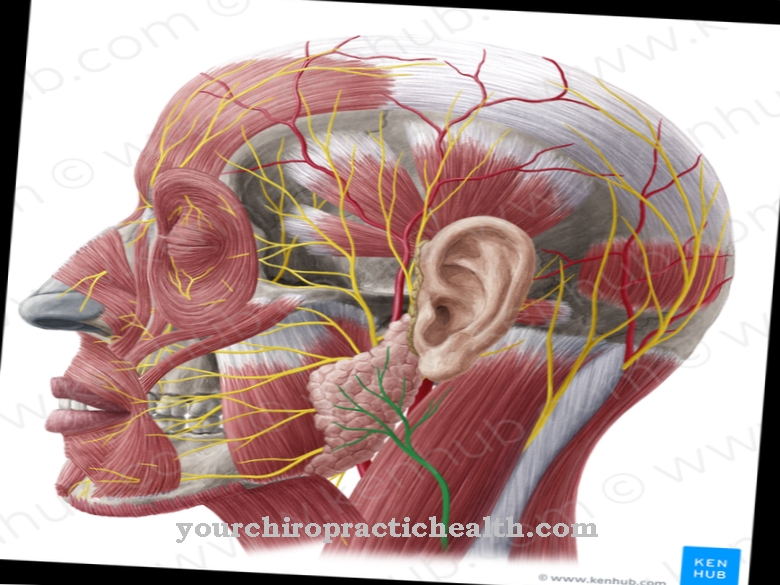The Nerve cell is used in science as Neuron designated. This is a special cell that is supposed to transmit impulses within the body. It is essential for the exchange of information.
What is a nerve cell?
The transmission of impulses is the most important task of the Nerve cell . Specifically, an organism should succeed in transmitting signals between the brain and the body organs. Billions of neurons are responsible for this in the human body. The union of the nerve cells forms the nervous system.
Depending on the structure and properties, the totality of neurons can be divided into cell clusters. In particular, a distinction is made between motor and sensory nerve cells.
- Motor neurons are responsible for communication between the brain and body muscles. Specifically, the body should be able to process environmental stimuli without errors and to react promptly with impulses.
- Sensory neurons connect the brain with the sensory organs. In the combination, a gap-free communication within the entire body is achieved. Interneurons are a special form. These are nerve cells that transport information over long distances. Local signals can thus be directed to different parts of the body.
Anatomy & structure
In its structure, a nerve cell can be divided into various components, each with its own area of responsibility. At the beginning, the focus is on receiving a stimulus. The dendrites play an important role here. You receive body stimuli with a highly branched branch system.
The information obtained is then passed on to the cell body, the so-called soma. The axon mound is located on the soma and collects the received stimuli. Forwarding only takes place when sufficient intensity has been achieved. The signal reaches the presynaptic end buttons in the form of an electrical potential. The axon acts as a connection. It is surrounded by lipid-rich cells and is thus electrically isolated.
The presynaptic end buttons convert the electrical signal into a chemical impulse. The chemical signal is responsible for the release of neurotransmitters. They enable further information transfer in the so-called synaptic gap (synapse). This is a hurdle to the next nerve cell. The process is repeated from neuron to neuron. Depending on the type of nerve cell, the anatomy can differ in its characteristics.
Function & tasks
The nerve cell system is essential for the maintenance of body functions. The constant exchange of communication between the brain, sensory organs and muscles enables a timely reaction to the environment. This begins with controlling breathing, body temperature, and blood circulation.
In addition, there is the metabolism, the energy supply and the sensors. The reflex is also one of the most important tasks. The specialty of a reflex is that a body reaction is carried out independently without the involvement of the brain. Instead, the spinal cord is responsible for information processing.
To enable a quick reaction, an impulse is sent directly to the spinal cord and executed by the affected body muscles. In retrospect, however, it appears to people as if they had exercised a conscious movement. This is because the brain takes control of the respective muscle region a short time later.
The nerve cells are also assigned a high priority in learning. In concrete terms, the synapses play an important role. Learning processes take place in a specific brain region, the hippocampus. In the synapses located there, a functional change occurs during learning success. The changes have the consequence that the intensity of impulses in the recipient cell increases.
The purpose of repeated learning is to make stored information more accessible. This is accompanied by the side effect that new synapses are formed. This is comparable to a beaten path. The more it is used, the more accessible it becomes. If it is no longer needed, it eventually overgrows. This also happens in a similar way in the brain. If information is not requested, synapses are broken down, while the intensity of the impulse transmission decreases. Specifically, it is about forgetting.
You can find your medication here
➔ Medicines for paresthesia and circulatory disordersIllnesses & ailments
Diseases and ailments of the nervous system are called neurodegenerative diseases. These are diseases that occur sporadically and progress slowly. Usually they can be traced back to hereditary causes.
Neurodegenerative diseases damage nerve cells, which affects the functionality of the nervous system. Dementia and movement disorders are ultimately the result. Alzheimer's disease is one of the most well-known diseases of the nervous system].
Alzheimer's usually occurs over the age of 65 and is responsible for more than 60 percent of all dementias. Dementia, in turn, is a brain disease in which cognitive, emotional and social skills decline. This can be attributed to a degeneration of the nerve cells located there. Deficits arise primarily in the functionality of the short-term memory.
[Progressive supranuclear palsy]] (PSP) is also a severe form of neurodegenerative disease. Damage to existing nerve cells takes place here in the basal ganglia. The basal ganglia are areas of the brain that are responsible for controlling automatic movements.
As a result, sick people are no longer able to keep their balance, control their eyes and coordinate swallowing. In addition, there are impairments in speech control. After three to ten years, PSP ultimately leads to death. With medication it is possible to delay the course of the disease and alleviate symptoms.













.jpg)

.jpg)
.jpg)











.jpg)